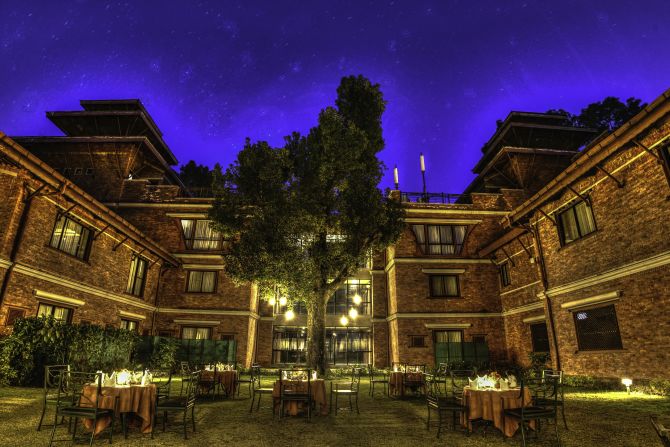As the political and cultural capital of Nepal, Kathmandu – bursting with ancient temples and bustling street markets – is a city with the power to stimulate all senses. Yet for tourists eyeing a more serene experience in the region, tranquillity lies a stone’s throw away.
Just a 25-minute drive east from the city center is Gokarna Forest Resort, a five-star luxury retreat and golf course embedded within 470 acres of protected sanctuary jungle, sheltering a rich array of wildlife.
Once the private hunting grounds of the Nepalese royal family, part of the area was offered on lease following the abolition of the monarchy in 2008, explained Gokarna’s golf director Deepak Acharya, but only on the condition that any prospective builder would need to construct a 100-room hotel.
Though a golf course had been present since 1999, the development saw it blossom into the undulating 6,755 yard, 18-hole setup that sits as the crown jewel of the resort today. For Acharya, its natural beauty rivals the world’s most iconic courses, such as Pebble Beach Golf Links on the Californian coast.
“The uniqueness of the golf course is what really inspires me, and I have been to at least 200 or 250 golf courses around the world. It’s very serene,” Acharya told CNN.
“I played Pebble Beach in December. Yes, the conditions there are immaculate and the oceans are wonderful, but Gokarna is also beautiful in its own way.”

With trickling streams winding through Kathmandu Valley, backdropped by panoramic views of the Himalayan mountain range, the resort – boasting a spa, two restaurants and a bar – ensures an abundance of natural scenery and ample opportunities for wildlife sightings.
It is commonplace to glimpse as many as 400 spotted and barking deer bounding across the course’s fairways on any given day, Acharya says. While Chitwan National Park in south-central Nepal may be regarded as the country’s “soul” for wildlife, he believes Gokarna is a more surefire bet for seeing the deer up close.
That often translates to a headache for the course’s greenkeeping team, but one Acharya is more than willing to endure.
“That is a big challenge for the golf course and for me to maintain, because they run on the greens,” he said.
“But you always have to pay the price for beauty. I don’t want to put up a big fence – that just takes the beauty away.”
However, greenkeepers have found an unlikely ally in their efforts to maintain the course.
Leopards put on a check on the local deer population through hunting, with the luckiest guests able to spot the elusive big cats on the resort’s guided golf cart tour that explores the 140-acre course.
Monkeys regularly occupy tree branches, sharing the space with more than 60 species of birds native to the forest, including lesser yellownape woodpeckers, orange-bellied leafbirds, and brown wood owls.

City of Temples
Bird watching tours are a popular experience at the resort, as are trail hikes where guides escort guests into the forest from behind the ninth tee to embark on a journey through historic temples and local villages.
Among the highlights is the Gokarnaneshwor Mahadev Temple, a finely decorated three-tiered building on the banks of the Bagmati river that features stone sculptures of various Hindu deities and is the site for a large festival on Kushe Aushi (equivalent to Father’s Day) in August or September.

Those who enjoy such excursions will be spoilt for choice should they take the short trip into Kathmandu, often dubbed “The City of Temples.”
Durbar Square, also known as Basantapur Durbar, is home to more than 50 temples, including the towering Taleju Temple (dedicated to the Hindu goddess Taleju Bhawani), the 16th century Jagannath Temple, which features erotic carvings, and Kumari Temple – home of the living goddess.
Many of the city’s key sites were damaged or completely destroyed during a devastating earthquake in April 2015, with many cleaned up and reopened months later in an effort to limit the damage to the city’s lucrative tourism industry.
The abundance of annual festivals in Kathmandu are a particular draw, with the five-day festival of light known as Tihar, or Yamapanchak, typically held in October and November.
Given its proximity to a host of mountains – Shivapuri Peak and Chandragiri Hill among its most visited – the city operates as an ideal launching point for adventurers. On a clear day at the highest peaks, trekkers can catch an unforgettable view of Mount Everest more than 150 kilometers (93 miles) away.












